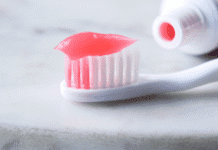Last Updated on July 19, 2024 by Asfa Rasheed
Table of Contents
Do you use disposable gloves in your daily life?
From domestic use to occupational PPE, disposable gloves are the most prevalent type of PPE used today, second only to face masks (and this is only in response to the global changes the COVID-19 pandemic wrought on how we publicly respond to respiratory infections).
Here we provide some fast facts, bust some myths, and share some trivia about disposable gloves!
Generally Speaking…
· Disposable gloves come in three main materials: latex, nitrile, and vinyl. Other materials used to make gloves include polyethylene.
· All gloves are not created equal! Quality depends on material, appropriate use for application, manufacturing processes, and more.
· Vinyl gloves are used much less commonly today. Vinyl disposable gloves are made from PVC, which is made from non-renewables and creates large volumes of toxic chemicals like dioxin and vinyl chlorides during the manufacturing process. Some of these can cause cancer. Other chemicals in vinyl gloves are known to potentially cause allergic reactions and dermatitis with prolonged use. Furthermore, vinyl gloves contain compounds that are mostly soluble in fat and not bound to the glove molecule – so they easily migrate onto food. Vinyl gloves are highly permeable to microorganisms like viruses and bacteria.
- · Latex gloves are a popular and affordable choice in many industries, however, they may cause irritation and even allergies in some people.
- · Nitrile is emerging as the most popular disposable glove material in many sectors, including medical and food handling.
- · Thicker gloves are not necessarily stronger! Glove strength is proportional to the quality of the raw materials used in their manufacture
- · Not all disposable gloves are clean, and some are contaminated as early as during the manufacturing process. As such, it’s important to know where your gloves are coming from, trust your supplier and glove brand, and use sterile gloves where appropriate.
- · You still need to wash your hands if you wear gloves! Your hands should be washed and dried thoroughly before putting gloves on and again after taking them off. No glove is 100% impermeable and any nicks, tears, and punctures negate their efficiency.
Nitrile Gloves
· Nitrile is a very common disposable glove material, used across many industries. It is widely favoured in the medical industry due to its strength, dexterity, and high puncture resistance. It is also preferred in the food processing, agriculture, automotive, agricultural, and industrial sectors.
· Nitrile is greaseproof, waterproof, oil-proof, and widely (but not entirely) chemical resistant.
· It is also highly non-allergenic, and fewer than 1% of users have any sensitivity to nitrile. (Latex allergy or sensitivity, on the other hand, is an issue for up to 12% of healthcare workers.)
· Nitrile gloves suppliers usually offer a variety of glove thicknesses, and thin gloves are best suited for applications where the wearer needs to retain touch sensitivity for detailed or dexterous work.
· The most common nitrile glove colours are blue and purple, though they are also available in other colours including black.
· Don’t use nitrile gloves if you are working with nitric acid, especially red-fuming nitric acid. The highly corrosive acid and the nitrile may react and spontaneously combust.
· Thin nitrile gloves are thin enough to potentially leave a glove print – an impression of the wearer’s fingerprints through the thin polymer of the glove on touched surfaces.
- Nitrile has a good biodegradability rating, making these gloves a sustainable choice.
Consider your needs and how disposable gloves are used in your workplace or home, and decide which type is best for you. Disposable gloves are available for purchase in many places, including online at reputable medical and dental supply companies.















